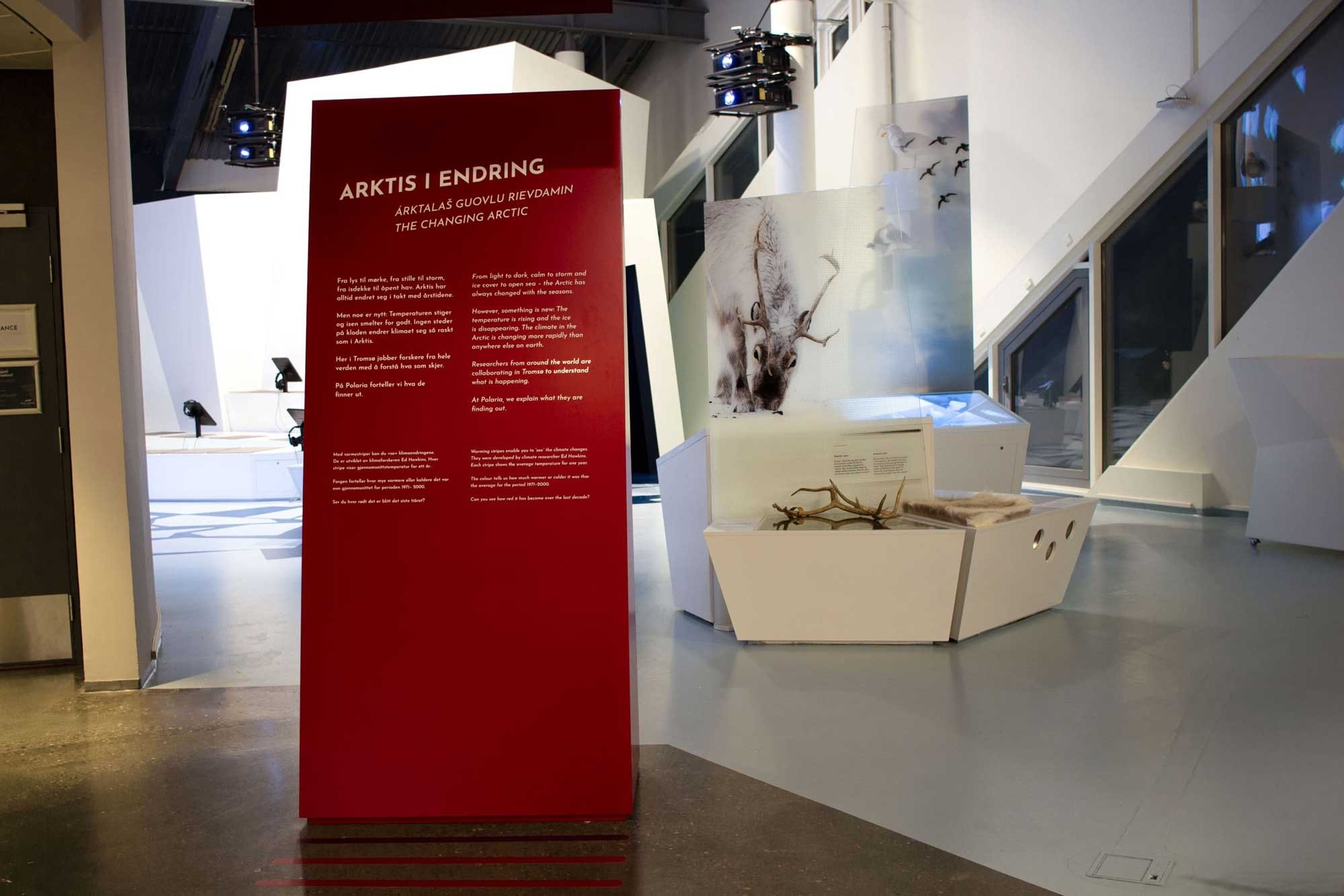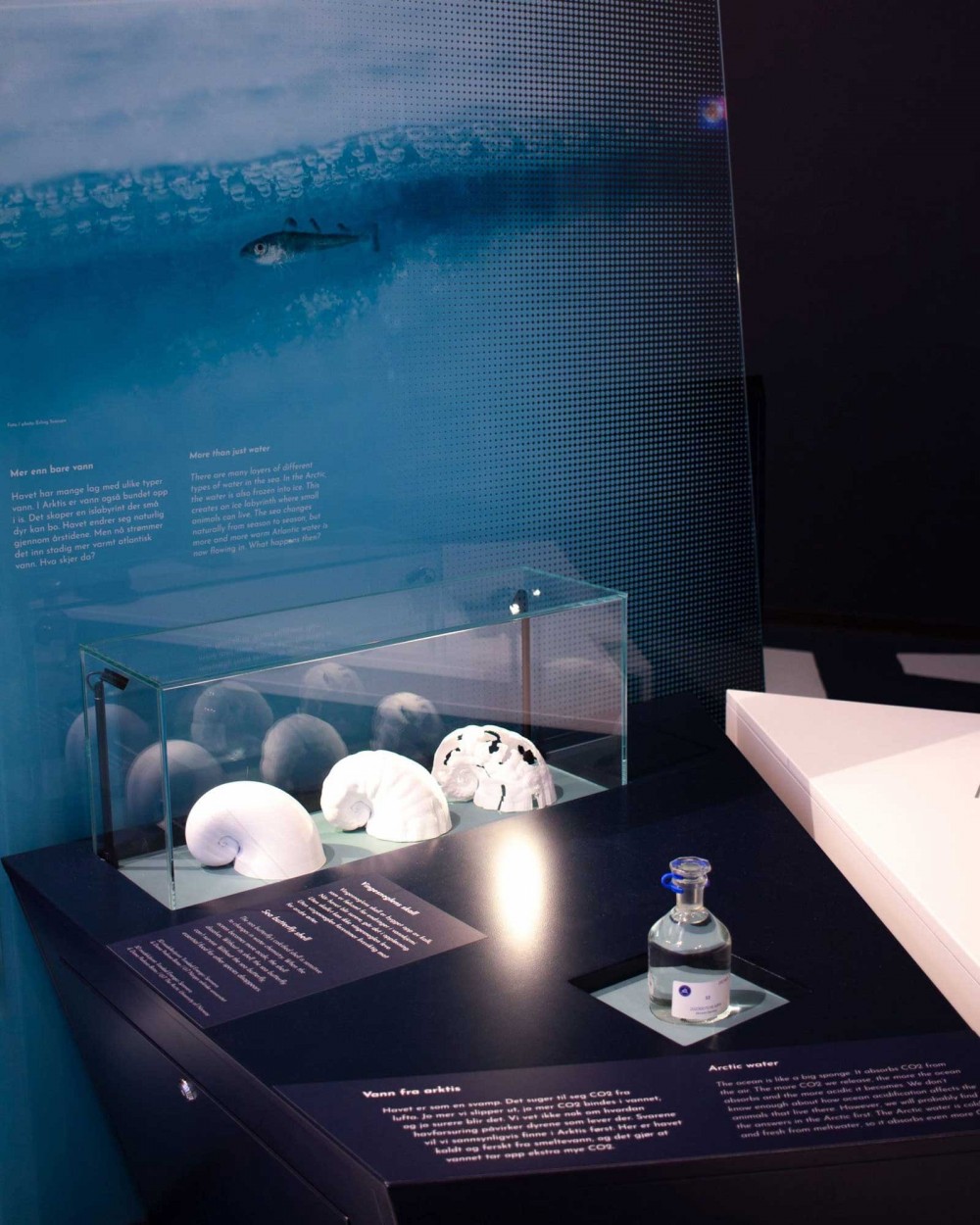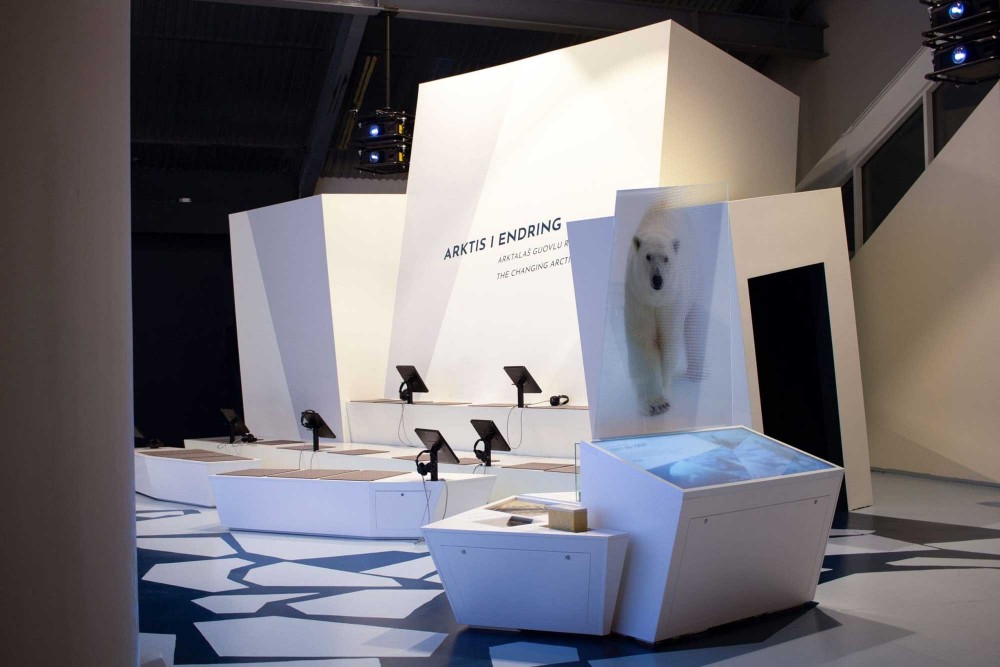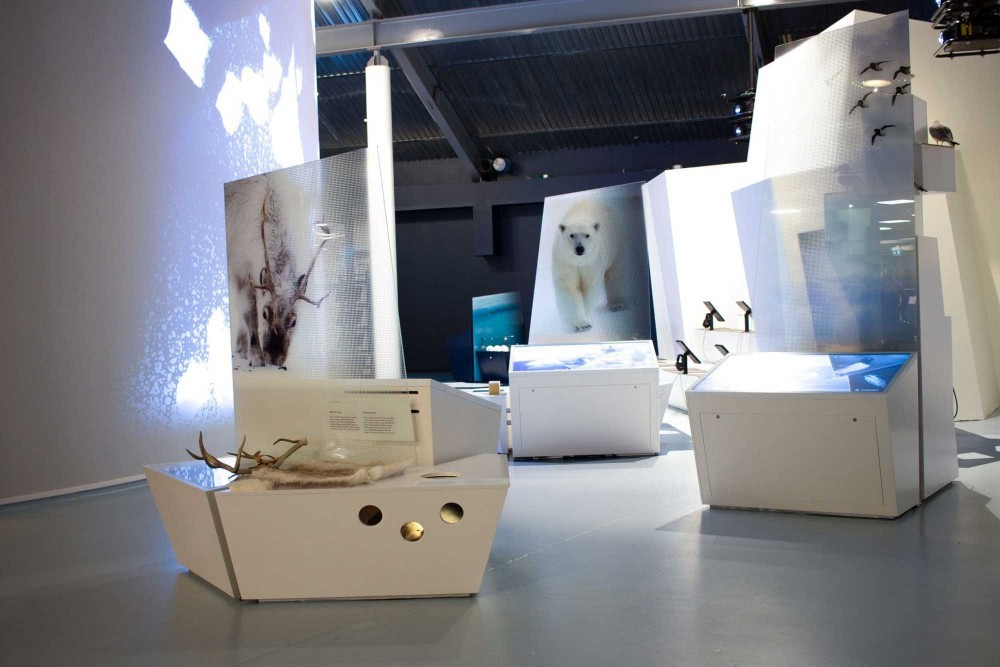
The Arctic is changing – and so is Polaria
By: Stine Charlotte Benjaminsen // Polaria
At the Fram Centre in Tromsø, scientists study the effects of multiple stressors on the Arctic environment. Next door, at Polaria, we showcase and explain their findings.
Polaria: a window for the Fram Centre
Polaria is a science attraction centre with a mandate to communicate science on behalf of the Fram Centre. However, over the years the window into the Fram Centre has diminished, only giving the public a few peeks here and there. Apart from the climate exhibition “Priceless”, the Polaria exhibitions have been outdated for a long time. There was a strong motivation to change this, and the covid-19 pandemic and lockdown provided time and financial muscle, as Norway distributed pandemic support funds.
Polaria had never been given a better chance to change. And we took it with both hands.
ADVERTISEMENT
Rebuilding the window, step by step
In 2021, Polaria and the Fram Centre signed a letter of intent to work together to create new exhibitions at Polaria based on research conducted by researchers at the Fram Centre. Polaria created a position for a person to represent Polaria in the exhibition project and to have editorial responsibility for the content in the exhibition. It was decided that the base of the exhibition should be the structure and function of Arctic ecosystems.
The thought was that this would create a foundation for communicating research results on the effects of human activity on these ecosystems, effects like ocean acidification, environmental pollution, and climate change. In goes without saying that the context is the Arctic, but what is happening in the Arctic is relevant outside of the context as well. As glaciologist and science communicator Dr Heidi Sevestre puts it: “If climate change persists at the rates expected in the Arctic, it will continue to affect the world’s ecosystems, economies, political stability, and human health and well-being.”
To be able to create the exhibition, it was crucial to work closely with the researchers, engineers, and communication personnel in the Fram Centre. The first step was to create a working group consisting of representatives from different research institutions, both researchers and communication advisors.
The next step was to gather scientific material from researchers at the Fram Centre’s 20 scientific institutions. Well over 70 different researchers have contributed so far. However, getting the material we needed so we could move forward with ideas and design was not always straightforward. Sometimes it seemed that every other email was an out-of-office autoreply: scientists naturally spend a lot of time on research cruises, fieldwork, and conferences or must prioritise finishing papers or applications for funding.
After a while we skipped some links in the chain of communication and just showed up outside the researcher’s office. These talks often led to far more interesting stories, deeper knowledge, and closer collaborations. The researchers also seemed to feel more ownership over the exhibition and were thus more motivated to share their time and dig up the necessary papers, photos, samples, and so on.
This made us more aware of the importance of dialogue: the most interesting content for the exhibition came from face-to-face meetings and not from prefabricated questions sent by email.

Bringing science to the people
Once the necessary material was collected, the process of designing how to communicate the scientific results began. In this work, Polaria collaborated with SixSides, a Norwegian exhibition architecture company.
Each and every one of us is involved in shaping the environment and climate we live in, and we need knowledge and insight to make informed choices about how we want it to be shaped. Such essential information is often provided by the research community, but the information does not necessarily reach the public. There can be several reasons for this. Often the scientists lack a suitable platform, or use suboptimal format and language.
Polaria has more than 140,000 local and international visitors each year and has the capacity and potential to reach many people, near and far. Combined with its proximity to Fram Centre researchers, in both location and partnership, Polaria is indeed a suitable platform with high credibility.
Regarding format of the exhibition, there is no size that fits all, and choosing the right format and the right words is in a way a scientific endeavour in itself. Let’s take communicating climate change as an example. Climate change messages must penetrate many psychological barriers to get through to the intended recipients, and as educators, we should be aware of that. Just writing a popular science article about climate change and its effects might not do the trick. An exhibition that touches people at a deeper, more personal level will likely have greater impact than yet another article. Reaching the audience by appealing to several senses may help them form memories, learn new things, and experience stronger resonance with what is presented.


We’re open – and you’re invited!
In November 2023, Polaria proudly opened its new exhibition “The Changing Arctic”.
When guests enter, they are met by long pieces of blue and red fabric hanging from the ceiling, each piece representing changes in the annual mean temperature in Svalbard since the turn of the millennium: blue for colder, red for warmer. The closer we get to the present time, the redder the fabrics get. So yes, the Arctic is changing. What, exactly, is happening in the Arctic?
To find some of the answers, guests are invited on a journey starting on the ice and ending up at the seafloor. On the way, they learn how everything is connected and experience fascination over nature and its inhabitants. By the end of the journey, the guest has also wandered through the sound tunnel, and sent off a personal ice floe to the huge ice wall.
Throughout the exhibition we ask the guests questions– often the same questions the researchers ask themselves. We have created a space for reflections, interesting discussions, and learning.
Where does the journey go now?
In the near future Polaria will open another new exhibition – “How do we know?” – which shows how the science-based knowledge in the first part of the exhibitions was obtained. The focus is on research methods, field equipment and technology, interdisciplinary science, and the scientists themselves: How did they become scientists? What drives them?
To keep our exhibitions up to date and present the newest findings, we need to maintain good cooperation and dialogue with active scientists. We envision a group comprised of representatives from the Fram Centre and Polaria that could meet on a regular basis to ensure that the exhibition is updated. Polaria should also be included in activities at the Fram Centre, and the researchers should familiarise themselves with Polaria as a platform for outreach. After all, that is what Polaria is for.
This story was originally published by the Fram Forum
The Barents Observer Newsletter
After confirming you're a real person, you can write your email below and we include you to the subscription list.


